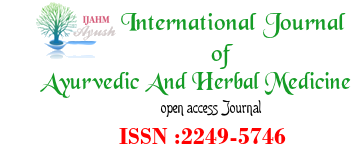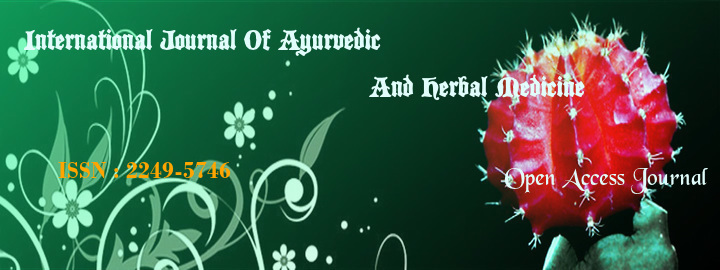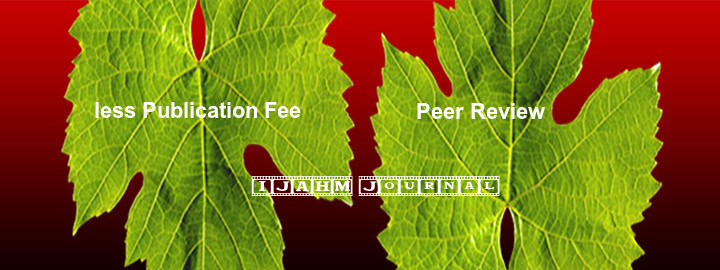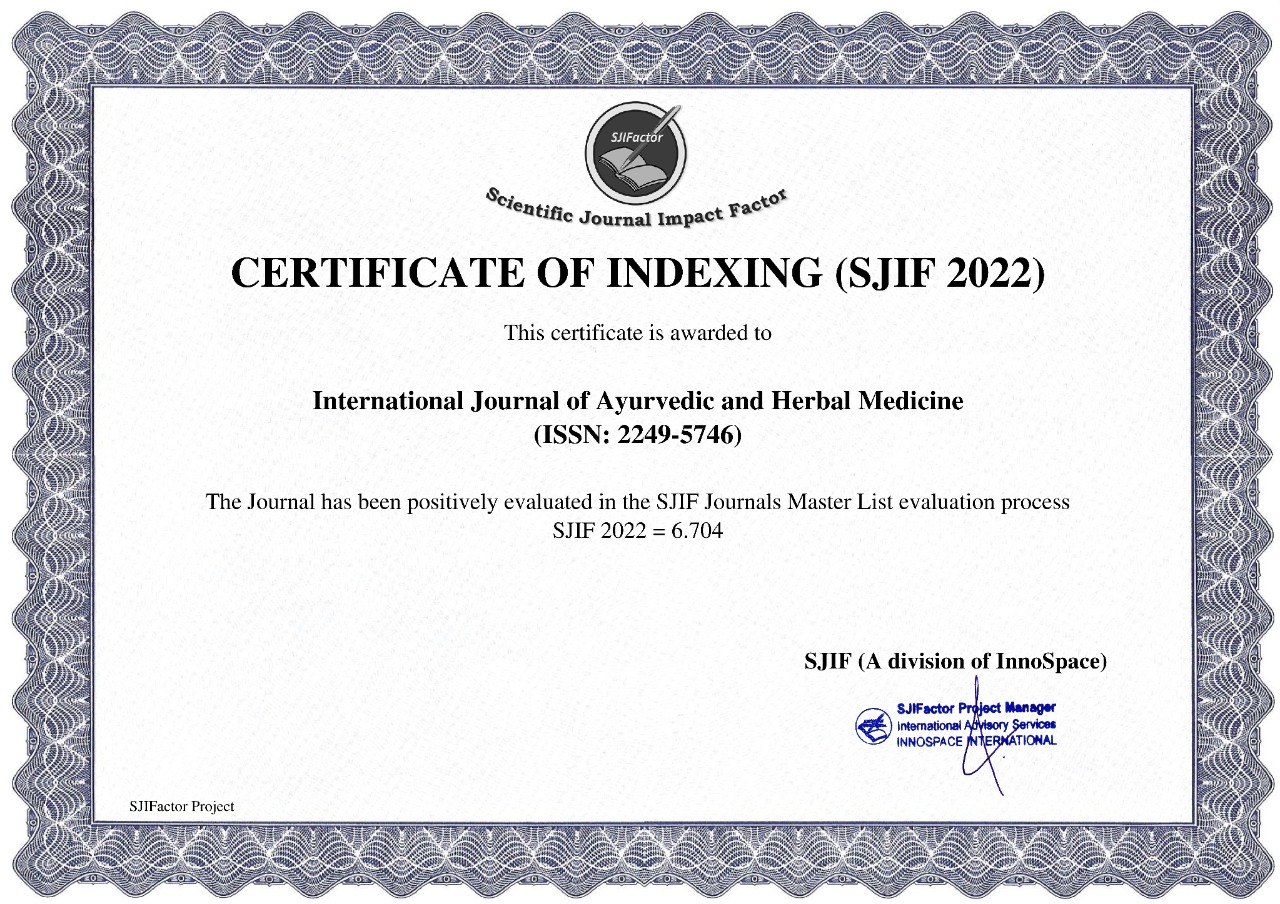


Adhikari Kopila, PG Scholar*
Anuradha K N, Assistant Professor
Department of Dravyaguna
Shree Dharmasthala Manjunatheshwara College of Ayurveda and Hospital, Hassan
Email: This email address is being protected from spambots. You need JavaScript enabled to view it.
Abstract
Introduction
Curculigo orchioides (Gaertn.) is a perennial herb with tuberous root system stock up to 10cm long; tubers are stout, short or elongate with copious fleshy root, leaves sessile or petiolate, flowers are bright yellow colored.1 The distribution is from tropical to sub-tropical regions in India, Nepal, China, Malaysia, and Japan.2 The herb is available for harvesting from Aug-Nov. over harvesting of the plant has resulted in the endangered status.2,3 It is considered to have rasayana, aphrodisiac, immune-stimulant, hepato-protective, anti-oxidant, anticancer and anti-diabetic activities.2,4,5 It is one of the major choices of many herbaceutical companies due to its high demand in the national and international market. But the market demand has led to an increased pressure on the natural resources.
In general, developing market for natural products, particularly those that are harvested from the wild, can trigger a demand which cannot be met by available or legal supplies and demands a conservation initiative, so that the local inhabitant are not exploited, causing more damage to their resources. Many times population takes advantage of their resources and knowledge, which can often be for financial gain; conservation of medicinal plants in its bio-cultural perspective not only implies conservation of bio-diversity but also places an equal emphasis on conservation of cultural diversity.6
In Red Data Book of IUCN 215 threatened species native to India are mentioned. About 121 plant species of Himalayan region have also been recorded in it (Pandey H.K., Deendayal, Das S.C., Biodiversity: Life to our mother earth). Curculigo orchioides (Gaertn.) a variety of ‘Musali’ commonly known as “kali musali” in classical text is one of the vulnerable plant listed by IUCN. Studies conducted on wild habitat of C. orchioides (Gaertn.) illustrated that this plant appears to be vulnerable due to its limited dispersal range of seeds and propagules.6,7
Process of regeneration of C. orchioides (Gaertn.) is either by sexual propagation or by vegetative propagation. The relative proportion of population of offspring produced by sexual and vegetative propagation is determined by the complex interplay between genetic and environmental factors (Ceplitis 2001).8 Though the role of genetic variation in selecting the mode of reproduction in C. orchioides (Gaertn.) is not known at present but some of the environmental factors such as high humidity and soil moisture appeared to favor bulbils formation from damaged leaves.
This plant appears to be vulnerable due to its limited dispersal range of seeds and propagules. Plants with ant or gravity dispersed seeds are the most vulnerable to habitat degradation and fail to re-colonize during restoration (McLachlan & Bazely2001). Recolonization of such species would be possible only if they are actively reintroduced. Thus habitat degradation could be one of the important reasons for the declining natural population size of C. orchioides (Gaertn.) in India as suggested by Jasrai & Wala (2001).9
Poor seed setting, low regeneration potential through sexual reproduction, limited dispersal range of seeds and propagules, high incidence of viral and bacterial diseases, shrinking of natural habitat due to massive population growth and other developmental activities, deforestation, extensive denudation of forest floor, caused by wild and domestic animal grazing and collection of leaf litter, change in climate pattern and forest fire plays a very devastating role in destruction of herbal medicines like Musali. There is lack of agro-technologies like scientific method of conservation, collection, & cultivation, which is also a cause for depletion of musali in wild population leading to its vulnerable condition.
There is reverse effect of moist-shady and dry-open habitats in the sexual and vegetative propagation of C. orchioides (Gaertn.). Sexual reproductive success was low at sites with high canopy cover (high shade and there by high relative humidity), where vegetative propagation rate from leaves was high. Opposite to this, vegetative propagation from leaves was nearly absent in the dry areas with low canopy cover, where sexual reproductive success was high.9,10
A detailed survey on C. orchioides (Gaertn.) should be carried out and detail information about its natural habitat, climate, soil, adaptability, growing, season, flowering time, seed setting stage should be generated. Accordingly conservation measures should be developed. Standard methods of cultivation i.e. agro-technology should be developed and farmers should be motivated for commercial scale cultivation of C. orchioides (Gaertn.) to meet the growing demand of herbal pharmaceuticals. Ban on collection of this in natural habitat, where it is in the state of extinct should be strictly materialized. After a gap of few years, when this plant species will multiply in sufficient quantity in its natural habitat, permission of scientific collection should be allowed. Training should be given regularly to the persons engaged in the collection of crude drugs from the natural resources. They should be trained for proper and scientific methods of collection, right time of collection of medicinally important plant parts without damaging whole plant. Collection of medicinal plants should be carried out scientifically, for example, only 70-80% of plants should be collected from the specific area, the rest should be kept intact for their future natural multiplication; otherwise the species will disappear from the particular area. Necessary research work should be carried out for optimum extraction of active ingredients from C. orchioides (Gaertn.) rhizome. People should be motivated to take immense pride in their natural heritage and actively participate in medicinal plants conservations programs by using different advertising media.7
Methods of propagation of C. orchioides (Gaertn.) in natural habitat
Sexual reproduction from seeds b. Vegetative propagation from leaves
Augustine AC, Souza LD, 1997, described a methodology of tissue culture for regeneration. Multiple shoots were obtained from the meristem tip culture on Murashige and Skoog (MS) medium supplemented with 6-benzyladenine (BA) (2.21µmol\l). The shoots were rooted either on half strength of MS basal medium or on the one supplemented with 1-naphthaleneacetic acid (0.53µmol\l). In vitro plantlets were transferred to pots containing a mixture of vermiculite and soil (1:1) for acclimation for a period of two or three weeks. At the end of a 3 month period, averages of 125 plants were obtained from a single meristem.11,12,13
Next method for large-scale multiplication (Suri et al 1999) of C. orchioides (Gaertn.) through bulbil formation of leaf explants in shake flask culture reported that by using a method developed for Rapid multiplication through direct organogenesis and bulbil formation in vitro leaf and underground stem explants produced maximum number of shoots on 35 medium supplemented with 4.4µmol\l benzylaminopurine. Next is the method of rapid multiplication through somatic embryogenesis and bulbil formation directly from leaf explants, where an extract from in vitro cultures of C. orchioides (Gaertn.), grown as bulbils in shake flusk, afforded two new glycosides of substituted benzylbenzoate Curculigoside C and Curculigoside D together with known compounds Curculigoside A and Curculigoside B. Use of different elicitors viz. methyl jasmoric acid, salicyclic acid and ethephon influenced the production of Curculigosides contents of leaves in in-vitro plantlets culture maintained on MS medium containing BA and IBA 0.1mg\l each. Elicitation resulted in increased flux of phenolics and some new derivatives were produced.14,15
Reproductive success of this plant appeared to be determined by canopy and litter cover. Litter cover had significantly negative impact on the seedling density of C. orchioides (Gaertn.) (P=0.001), which is a common effect of litter accumulation on herbaceous species (Berendse 1999). The combined result of these two effects was the decline in the total density of this plant with increasing canopy. Reproductive success was high in plots with partially open canopy and accumulation of only thin layer of litter.16,17
Vegetative propagation in C. orchioides (Gaertn.) from leaves was the combined effect of mechanical damage, probably, high humidity and availability of adequate moisture in soil. High humidity slows down the drying rate of detached damage leaves and provides sufficient time for the development of plantlets. The indiscriminate damage to adult plants by animals might have induced regeneration capacity from leaf midrib. (Shrestha B.B., Jha P.K., Kandel D.R. 2011). Identification of the environmental condition essential for natural regeneration of C. orchioides (Gaertn.) from leaves can help to improve the technique of in-vitro micro-propagation at large scale.9
References
1. Govt. of India. The Ayurvedic Pharmacopeia of India, part 1, vol.5. Dept of AYUSH, New Delhi, 2008, 138-40.
2. Chauhan Nagendra Singh, Sharma Vikas, Thakur Mayank, Dixit Vinod Kumar. Curculigo orchioides: the black gold with numerous health benefits. Journal of Chinese integrative medicine. 2010, 8(7):613-23.
3. Levekar GS. Database on Medicinal Plants Used in Ayurveda and Siddha, Vol.8. Central Council for Research in Ayurveda and Siddha, New Delhi, 2007, 522-531.
4. Sharangadhara. Sharangadhara Samhita, Madhyama Khanda 7/158, 5th ed. Chaukhamba orientalia, Varanasi, 2002, 196.
5. Pandit Narahari. Raj Nighantu, Mulakadi Varga, 115-117, translated by Tripathi Indradeva. Krisnadasa Academy, Varanasi, 1982, 208-9.
6. Pandey HK, Deendayal, Das SC, Threatened medicinal plant biodiversity of western Himalaya and its conservation. Ministry of Defense. Defense research and development organization. Biodiversity: Life to our mother earth. p.281-95.
7. Sharma Ravindra. Agro-Techniques of Medicinal Plants. Daya Publishing House, Delhi, 2004, 168.
8. Augustine AC, Souza LD. 1997. Regeneration of an anti-carcinogenic herb, Curculigo orchioides (Gaertn.). in vitro Cell Dev Biol Plant; 33(2): 111-13.
9. Shrestha B.B., Jha P.K., Kandel D.R. 2011. Reproductive ecology and conservation prospective of a threatened medicinal plant Curculigo orchioides Gaertn. in Nepal. International society for tropical ecology.Tropical ecology 52(1) p.91-101.
10. Rao Ramanath V, Arora RK. 2004. Rational for conservation of medicinal plants. Medicinal Plants Research in Asia. International plant genetic resources institute. vol.1 p.13-23.
11. Suri SS, Jain S, Ramawat KG. 1999. Plantlet regeneration and bulbil formation in vitro from leaf and stem explants of Curculigo orchioides Gaertn., an endangered medicinal plant. Sci Hortic. 79(1-2). p.127-34
12. Wala BB, Jassari YT. Micropropagation of an endangered medicinal plant Curculigo orchioides Gaertn. Plant Tissue Cult. 2003, 13(1). p.13-19.
13. Parajapati, H.A., D.H. Patel, S.R. Mehta & R.B. Subramanian. 2003. Direct in vitro regeneration of Curculigo orchioides Gaertn. An endangered anti-carcinogenic herb. Current science 84. p.747-49.
14. Suri SS, Arora DK, Sharma R, Ramawat KG. 1998. Rapid propagation through direct somatic embryogenesis and bulbil formation from leaf explants in curculigo orchioides. Indian J Exp Biol. 36(11). p.1130-35.
15. Suri SS, Arora DK, Ramawat KG. 2000. A method for large scale multiplication of Curculigo orchioides Gaertn. through bulbil formation from leaf explants in shake flask culture. Indian J Exp Biol. 38(2). p.145-48.
16. Jasrai. Y,T & B Wala. 2001. Curculigo orchioides Gaertn. (Kali musli): an endangered medicinal herb. Pp.89-95. Inz; I.A. Khan & A. Khanum (eds.) Role of Biotechnology in Medicinal and Aromatic Plants. Vol. IV. Ukaaz Publication, Hyderabad, India.
17. Shrestha, B.B., S. Dall’Acqa, M. B. Gewali, P.K. Jha & G. Innocenti. 2008. Biology and phytochemistry of Curculigo orchioides Gaertn. pp.50-60. In: P.K. Jha, S.B. Karmacharya, M.K. Chettri, C.B. Thapa & B.B. Shrestha (eds.) Medicinal Plants of Nepal: An Anthology of Contemporary Research. Ecological Society (ECOS), Kathmandu, Nepal.
index























